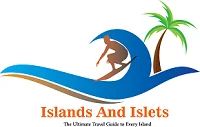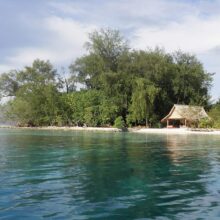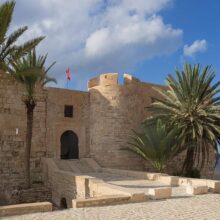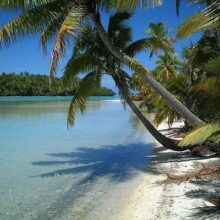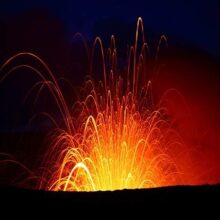Islands and Islets: Everything You Need to Know About
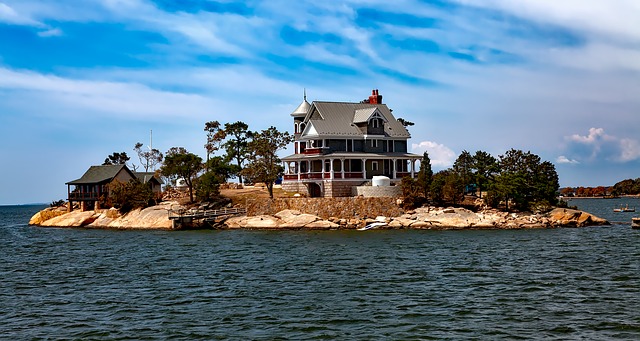
Islands and Islets whenever I heard these names I just go back to my childhood days.
When I was a kid, I always loved to visit the Islands, and I always felt that my dream vacation was to visit most of the beautiful islands.
Not only me, but you can also ask almost anyone you know about “what is their dream vacation,” and most of them will say some sort of Island names such as “Hawaii, Mauritius, Bali, Kauai and more. It is mainly because people love visiting the Islands and also like to hang out with their friends and family.
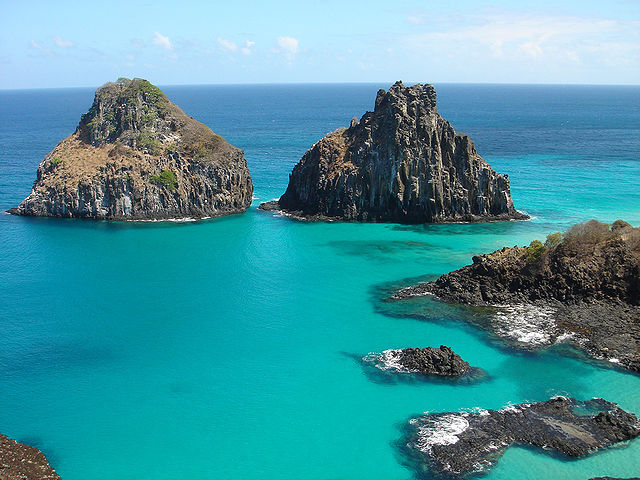
Usually, as I love Island, I thought I know everything about the island. Then I came across the word Islet that I really don’t know. Actually, someone asked me about the islet then all I could do is kept a blank face.
Islands and Islets
Then I suddenly checked that and found out that it is nothing but a small island. So, from then on I just tried to learn more about the Islands and Islets. I bet, most of the people who are reading this post don’t know about the Islets.
Right?
If you are one of them, who don’t know about the Islands and Islets. Then don’t worry I am going to cover every aspect you need to know about the Islands and Islets.
I will cover all the aspects such as what is Island, types of islands and Islets and so on in this post. As you are willing to know about the island and islets, you have come to the perfect place.
Firstly, let start with the basic things first.
What is the Island?
Almost all of you might know about this but just saying this for the reference. An Island is any piece of land, which is surrounded by the water. In this world, there are many islands, which are surrounded by rivers, lakes, ponds, and oceans.
Now,
As we have seen about the island lets, look at the types of islands and then move on to the islands and islets.
Types of Islands in the world:
Although the water covers islands, there are almost identical to the natural land which others exist. We can see lots and lots of developments in the islands and islets as well.
As we are speaking about the “Islands & types of Islands” you have to know about them accurately. Let’s get into the detailed view of the types of Islands.
In general, there are six types of Islands exists around this world. So, I am listing out all the existed Islands in this post below.
Continental Islands:
Continental islands are one of the types of islands which occupy large body portion of land. In the continental isles, you can see bodies of land which are connected by the continental shelf directly to the continent.
You can see Australia is a continental island which is having the extension of Tasmania. Along with that North America is another continental shelf which is having Greenland as the part. You can even see, and Tobago is another South American continental shelf.
Oceanic Islands:
The land mass, which is formed by the volcanic eruptions on the ocean floor, is generally called the Oceanic Islands. In general, volcanoes form these type of Islands. In every volcanic eruption, they form up some layers of lava, which eventually break the water surface into small parts. Whenever the volcanoes come above the water level, then they form islands. The perfect example of that is “Hawaii” the beautiful island in the world.
Usually, these Oceanic Islands are known as the “ high Islands.” These type of oceanic islands are often formed near the hot spots, tectonic plates, subduction zones, etc.
Tidal Islands:
Tidal islands are the other types of Islands which have bodies that are connected to the first land at the low tide. That means it is connected to the landmass which is joined by the low levels of water where you can reach the ground on foot.
When they are having high water levels and high tides they are completely cut off from the land, then it makes it an actual island. The tidal islands are connected to the landmass by a human-made causeway or by natural ways.
Some of these tidal islands are the Mont Saint Michel in the Normandy, which is located in France. Another one is Hiroshima in Japan. You can even find Lindisfarne on the north coast of England.
Coral Islands:
The other types of the island are the coral islands. These are the islands which are formed in the warm water by the tiny sea animals called the corals.
As the corals will build up their skeletons will make the reefs of the limestone. Usually, corals ended up when they are at the average age, but some corals will grow more up from the plateau of the seafloor. This will increase until there is a proper break in the water surface.
And this process will form islands. These coral islands are called the low flat lands, the best example for these types of the island is the Bahamas. The Bahamas are having the highest parts of underwater banks. Along with the Bahamas, you can see the coral peninsula at the atoll; this is called the coral reef which is growing like a ring around the sides of the oceanic islands.
Here the land will shrink into the sea, and it will keep on growing. The live example for it is located in the Lakshadweep islands. This island is having 12 of those atolls which sink into the sea.
Artificial Islands:
Artificial islands are the human-made islands. You can know about these islands by the name itself. Here the material, which is brought in from elsewhere, forms the land or it is the part of the already existing island which is draining with the water around It.
The best examples of the Artificial Islands is the harbor island in the San Diego Bay, which located in California. The other one is Treasure Island in the eastern Caribbean and so on.
Even Singapore is involved in creating artificial islands apart from the other actively involved nations such as Qatar and Japan.
Barrier Islands:
Barrier Island is the last and final type of the island in this list. The barrier island is a type of island that is formed from the landmass of small land that is parallel to the coastlines. These type of areas are primarily made up of the sediments, which are slowly separated from the seashore by a lagoon.
The barrier islands usually have dunes, which act as the barriers between the mainland and the seashore. These types of islands protect the landmass by the storms, winds, and tsunami as well. The islands on the Atlantic coast that are located at southern Florida are formed precisely by this way.
In that, some of the islands are formed by glacial deposits, which are from the ice age. Examples of barrier lands are Galveston and Padre Islands in Texas, Frisian isles in West Germany.
Islands and Islets Ecology:
The islands ecology is nothing but the study of the island organisms and their regular interaction with the other bodies and the environment. In general, the island accounts the nearly 1/6th of the earth surface, but the ecosystem of the island is widely different from the lands.
The Islands is having high availability of empty spaces which leads to the increase in the speciation. So, the islands mainly the island ecosystems are comprised of 50% marine diversity, 30% of biodiversity and some of the most unusual species will be grown in Islands.
Islands are rich for attractive sites of ecological research because they provide perfect examples of evolution in action. You can see the patterns of colonization, adaption, speciation, survival, human impacts on the island ecosystems, hunting, introduced species and so on in the island ecology. In this post of Islands and islets, you can see the island ecology because the ecology is similar to the island and islets.
Islands and Islets Biography:
The general theory of the island bio geography is always determined in two factors. First one is the effect of the distance from the land which means the range of island from the ground.
Here the mainland is the land where all the new immigrants and species which are originally inhabited. the second factor of the island and islets biography is the effect of the island size.
These are the two main factors which are taken into consideration. In general, these two factors hold the equilibrium which means the species richness of the island is measured roughly through the immigration balances.
Until now, we have seen about the islands. Now let’s see about the Islands and islets.
Let me take you to the islets information.
What are the islets?
An Islet is a typically a tiny island. These islets are small islands, which are similar to the emergent land features on atolls, which we have read about in coral islands. These are having different names such as Skerries, cays or keys, etc.
Now we have covered Islands and islets topic briefly. Let us see types of islets so that we can go into the islands and islets post in more detail.
Types of islets?
As I already said that Islets are small islands, these are having types as well. But, people often call them as islets, and they don’t really bother to know the types because they really don’t need to. But as you are crazy about Islands and islets, you have to know some details to share with others in your long run.
So, let’s get into the types of Islets.
Cay:
Cay is one of the types of Islets, and it is often referred to as Key. This type of Islets is formed by the accumulation of the beautiful mixture of sand deposits on the reef. Here the reef is nothing but a rock or the sandbar, which is featured below the water surface.
Motu:
Motu is also the type of islet, which is formed by the reef by the broken coral, and sand that is surrounded by the atoll.
River Island:
Most of the people think that it should be in types of islands but frankly speaking, it should be mentioned on the Islets list. These are the small islets within the radius of the river.
Rock:
The “Rock” is another type of Islet which is having uninhabited landform which is mostly composed of the rock particles. You can see the rock type of islets more in the beaches and offshores.
Sandbar:
Sandbar is nothing but tiny islets that are exposed to the sandbar and formed with the sand. This sandbar is another type of islet that you have to consider in the Islands and Islets.
Sea Stack:
The Sea stack is a very thin, and vertical land mass which is poked out of a body of water.
Skerry:
A skerry is another small rocky island that is usually defined as too low to the habitation. That’s why most of the people will not call this an island. They often call these type of islets as skerry.
Subsidiary islets:
These are very small islands that are isolated from the water. These will belay off the shore of the large island. Similarly, any new land in an atoll is always called the subsidiary islets.
Now, we can go to the islands and islets full and conclusion after its characteristics and so on.
General Characteristics of the Islands and islets:
To consider a place like an island you have to check out these characteristics. Here in this general characteristic of the islands and islets, I am mentioning about the geological point of view as well:
- To say a place as an island, it has had a minimum length of the 150 meters.
- Although the size of the island is extremely varied from one island to the other, the minimum size of 150 meters can be called as Islands and islets.
- The largest island in the world is Greenland, as it has more than 2 million square kilometers.
- If this is having 2 kilometers or more means, it should be separated as the continent.
- Islands can be usually located in sea, rivers, lakes in different sizes and shapes.
- As we already know, the smaller islands are called the islets.
- Most of the islands and islets are having animals and plants, which are native to the sector.
These are the general characteristics of the Islands and Islets.
Now, lets go to the final section of the Islands and islets. That is how UN convention law defines the islands and islets.
How UN convention law defines islands and islet?
UN convention law of sea defines the island as the naturally formed area of land which is surrounded by the water. And they have mentioned that it should be above water at the high tide.
The territorial sea, and the contiguous zone and the continental shelf of an island are usually determined in the provisions of the conventions which apply to the other land territory.
The rocks which really cannot sustain human habitation or any other economic life of their own will have no exclusive economic zone or the continental shelf.
Now, these are the full details of the islands and islets. I think i have cleared all your doubts on the island and islets in this post.
Conclusion:
Finally, I have given all the required information you need on the islands and islets post. Now its your turn to share this article with your friends who love visiting islands and islets.
